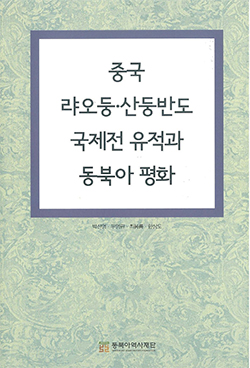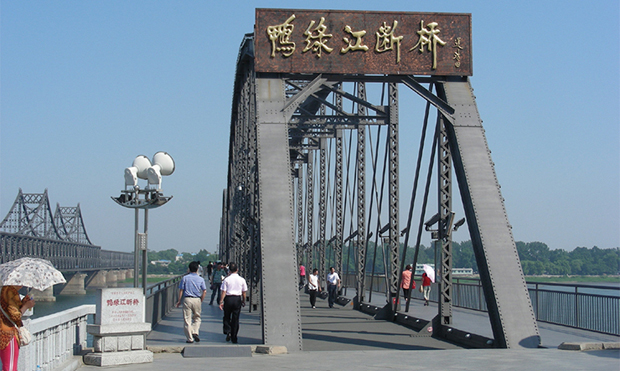동북아역사재단 2014년 08월호 뉴스레터
- Written by Park Sun-young, Research at the Center for Asian Studies, Kyungpook National University

While there has been cooperation through various exchanges among the three Northeast Asian countries of Korea, China, and Japan due to their proximity to one another, there have been also conflicts and confrontations caused by conflicts of interests or certain international situations. Despite their wish to 'establish an East Asian Community,' their specific efforts to overcome conflict and confrontation have been minimal. To facilitate the kind of exchange and communication in East Asia that is not restricted by the concept of nation or people, the Northeast Asian History Foundation carried out the "Northeast Asian Maritime Peace Belt Project" from 2008 to 2012, in which experts in relevant fields conducted intensive local investigations and studied the related literature, in an effort to explore new directions. Specifically, the modern historical sites of international wars fought in the Liadong and Shandong Peninsulas in China were studied to analyze how wars were remembered and commemorated and to find ways to use them for peace purposes. And the result has been published into a book titled International War Sites in the Liadong and Shandong Peninsulas of China and Peace in Northeast Asia.
Searching for the Memories of War Remaining in the Liadong and Shandong Peninsulas
The memories of war, despite, or ironically, because of the images of fear and death that they evoke, remind us of the importance of life and peace, But "the sacred death for others," supposedly in the service of the people or nation, also contributes greatly to the reproduction of war memories because it is etched in history in holy and glorious forms adorning museums or memorial halls. When a war ends, it often ends with "the winner's glory" and "the loser's humiliation." And the loser's humiliation often turns into determination to get even and escalates into another war where the loser seeks "the winner's glory." Of course, it would be simple if the war ended with the winner's glory and the loser's humiliation, and nothing else. But when only humiliation remains, without either the winner or the loser, identifying what to remember and commemorate becomes an ironic challenge.
Evidently, the names 'Sino-Japanese War' and 'Russo-Japanese War' carry no trace of the words 'Korean Peninsula,' even though the Korean Peninsula is the place where the two wars broke out and it suffered damage caused by the tug-of-war between the winner and the loser. Ironically, this fact has never been acknowledged or studied properly by the international community. The Sino-Japanese War and the Russo-Japanese War that followed not long afterwards are both events that had an enormous effect on not only the countries directly involved in the wars--China and Japan, and Japan and Russia--but Asia as a whole. In particular, the Sino-Japanese War brought about a major change to the traditional Sino-centric international order of East Asia. Therefore, the significance of these two wars can be understood more clearly only if examined in the broader context of Asia and the world, instead of in terms of the countries involved.
This book first noted that the Liadong and Shandong Peninsulas were important strategic locations for the Sino-Japanese War and the Russo-Japanese War. These two peninsulas had been hubs of very active exchange within the East Asian region encompassing China, Japan, Russia, and the Korean Peninsula. They also became regions of exchange between the East and the West when Germany as a new Western imperialist power gained control of the Shandong Peninsula. Against this backdrop, field investigations into the historical sites and facilities related to the Sino-Japanese War and the Russo-Japanese War were conducted to examine their locations and structures, and how the sites were being put to historical and practical use was analyzed. The written descriptions of the historical sites were studied to understand their academic and historical meaning, with focus on understanding how China understood history and what their historical perception was.
 The Broken Bridge over the Abrok River was completed by the Railway Bureau of the Japanese
The Broken Bridge over the Abrok River was completed by the Railway Bureau of the JapaneseGovernment-General of Korea after Japan's victory in the Russo-Japanese War. After the Korean War,
China preserved the ruined bridge, which, to this day, attests to Japan's aggression of Northeast China
and colonial exploitation of resources, and the tragedy and trauma of the Korean War.
Finding Ways to Use Historic Sites for Establishing Peace in East Asia
Another focus was placed on finding 'the meaning of war and peace' in exhibits or labels in museums, in the belief that identifying the background and cause of the outbreak of the wars and learning lessons from it could provide a clue to finding paths to co-existence and co-prosperity for different nations and peoples in the future of East Asia. Attention was paid to exchange with the world as well as exchange within East Asia, investigating the historical sites remaining in the Liaodong Peninsula and the Shandong Peninsula, including those related to events in Korean history, such as Jang Bo-go's activities and anti-Japanese movement, as well as Germany-related historical sites in Qingdao. To this end, efforts were made to bridge the gap between theory and reality by adopting the method of field visits and surveys of the war sites and referring to documentary evidence (e.g. research papers, research books, source books, photo albums, memoirs, autobiographies, testimonies, and related newspaper and magazine articles, etc.) at the same time.
About the same relics and sites of the Sino-Japanese War and the Russo-Japanese War that unfolded in the East Asian region, two countries conducted historical education based on two assessments completely opposite to each other, depending on the period and subject. Can this reality contribute to facilitating mutual exchange and expanding cooperation in East Asia? How can the existing sites and relics be used in achieving reconciliation and establishing a zone of peace within East Asia? Can't we consider using the war sites and relics of modern East Asia with the future in mind? Can't historical sites be put to good use in overcoming conflict and confrontation among the East Asian nations and peoples and creating a zone of peace?
Dispelling the misunderstanding that arose from the self-centered remembrance of the past and sharing a historical view that is understood and accepted by each other is easier said than done. But, if East Asia desires co-existence, it has to devote itself to finding ways to get it. The primary goal of this book is to raise these questions again, and find ways to build a practical and realistic infrastructure to come up with new solutions. Therefore, it could be used as a useful guidebook for trips to historical sites as the foundation for overcoming differences in historical perception in East Asia and finding common ground. Bring this book as a reference for trips to historical sites and have a system in place that allows new ideas to be presented and implemented, and it will help foster a new generation of East Asian civil society and youths with conscious minds. I will be really glad if the Northeast Asian History Foundation tries to come up with a more specific exchange and communication solution by offering programs for mutual exchange in East Asia in addition to research projects.


